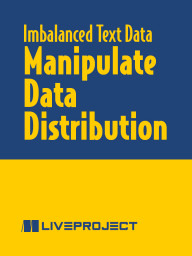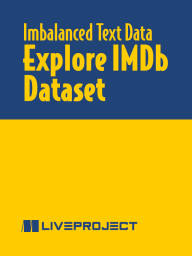projects by KC Tung
Training Models on Imbalanced Text Data
In this series of liveProjects, you’ll take on the role of a data scientist working for an online movie streaming service. Your bosses want a machine learning model that can analyze written customer reviews of your movies, but you discover that the data is biased towards negative reviews. Training a model on this imbalanced data would hurt its accuracy, and so your challenge is to create a balanced dataset for your model to learn from. You'll collect your company’s data by deliberately introducing imbalance to an IMDb (Internet Movie Database) review dataset, use a sampling technique to balance the dataset, then build a machine learning model from the dataset.
Augment Training Data and Classify Text
In this liveProject, you’ll augment text-based training data for a sentiment analysis algorithm with artificially generated positive reviews. You’ll merge the synthetic positive reviews with an unbalanced dataset focused on negative reviews, thereby creating a balanced dataset for your model to train on. You’ll train your model, then evaluate its metrics using sklearn.
Generate Text Samples
In this liveProject, you’ll build a deep learning model that can generate text in order to create synthetic training data. You’ll establish a data training set of positive movie reviews, and then create a model that can generate text based on the data. This approach is the basis of data augmentation.
Manipulate Data Distribution
In this liveProject, you will create an imbalanced dataset from the IMDb movie dataset. Your goal is to make a dataset where positive reviews are the minority. You’ll then test a theory that if you oversample positive reviews, you could rebalance the training data to build and train a text classification model. You finish up by examining the model performance with a confusion table, and basic metrics such as precision, accuracy and recall.
Explore IMDb Dataset
In this liveProject, you’ll explore a dataset of movie reviews and prepare it for sentiment analysis. The dataset you've provided is balanced between positive and negative reviews, but is encoded in such a way that you will need to use the dictionary (lookup) in this dataset package to decode the content to plain text. Your challenges will include decoding the data to plain text, and then converting the plain text into tokens in a Pythonic manner.




